Elephant Hybrids
Family Elephantidae
Mammalian Hybrids
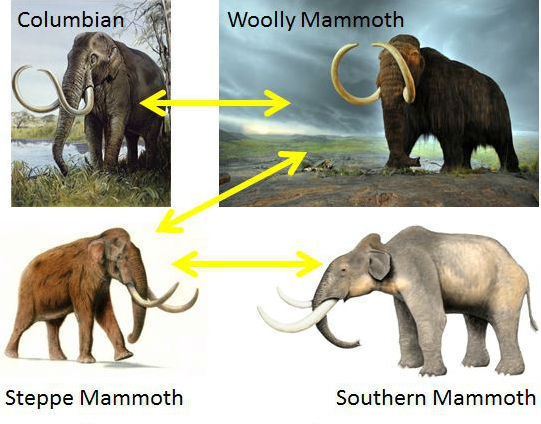 In the picture above, arrows indicate reported mammoth hybridization pairings.
In the picture above, arrows indicate reported mammoth hybridization pairings.
Reported elephant hybrids:
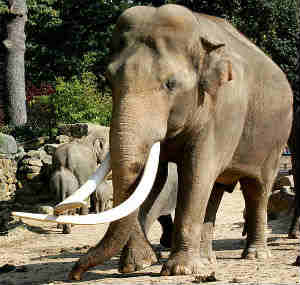 Indian Elephant
Indian Elephant(Elephas maximus)
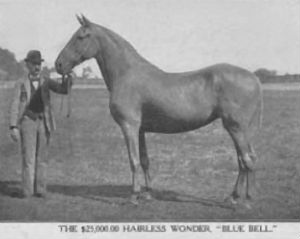
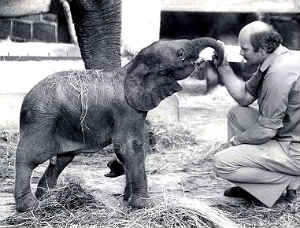 Motty, the elephant hybrid born at Chester Zoo in 1978 (photo courtesy of Derek G. Lyon/Chester Zoo) Enlarge
Motty, the elephant hybrid born at Chester Zoo in 1978 (photo courtesy of Derek G. Lyon/Chester Zoo) Enlarge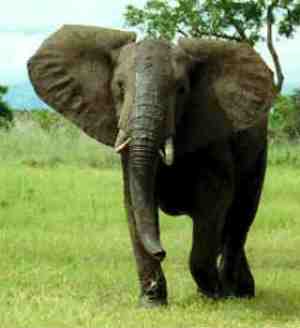 African Elephant
African Elephant(Loxodonta africana)
Elephas maximus [Asian Elephant]
× Bos taurus [European Domestic Cattle] See the separate article "An Elephant-cow Hybrid?"
× Equus caballus (♀) [Domestic Horse] There are no well-verified reports of this distant cross. However, an alleged hybrid of this type, known as “Blue Bell,” was toured around the United States in the early 1900s. According to one news report, Blue Bell was the offspring of a mare who had been driven to town by her owner; when a procession of circus elephants passed the spot where she was tied up, pregnancy supposedly resulted. Blue Bell’s foreparts were said to be like a horse’s, her hindquarters, like an elephant’s. The report stated that “Her skin on the neck and sides is thin and tender like a horse’s, but on the hips and flanks is tough and coarse like an elephant’s. Another characteristic of the elephant is her tail.” The animal was apparently almost entirely hairless. However, as can be seen in the photo at right, Blue Bell seems to have had nothing in common with an elephant other than naked skin. Additional information: news report #2, news report #3, news report #4, advertisement.
× Loxodonta africana [African Elephant] CHR. DRS. At about 9:00 a.m. on July 11, 1978, a female Asian elephant, “Sheba,” at Chester Zoo (UK) gave birth to a hybrid male calf. He was named Motty (after George Mottershead, the founder of the Chester Zoo, who had died two months before). The father was an African bull, “Jumbolino.” No one had realized that Sheba was pregnant. The calf caused quite a stir in the zoological community because it had been believed that interbreeding of this sort was impossible. Indeed, Sheba’s keepers did not believe she could possibly be pregnant, right up to the time of parturition. Motty mixed the traits of African and Asian elephants. His head, ears and trunk were much like those of an African elephant, except for the trunk tip, which had only one “finger” instead of two, as does the Asian elephant’s. His spinal column was convex like an Asian, but shaped more like the African elephant above the shoulder. His forefeet had five toenails but his hind feet had only four. Motty was six weeks premature, underweight, and unable to stand until he was three days old. Sadly, he died of necrotizing enterocolitis and E. coli septicemia after only ten days. His skin was preserved and is presently in storage in the Natural History Museum, London. Anonymous 1979; Chester Zoo News and Guide, July 1978; International Zoo Yearbook 1980; Bartlett Society.
× Mammuthus primigenius (♂) [Woolly Mammoth] One method of resurrecting the extinct woolly mammoth, proposed by Japanese scientist Akira Iritani, is to use sperm from a frozen male mammoth to fertilize Asian elephant eggs to produce a half-mammoth, half-elephant hybrid. The resulting hybrid embryo would then be placed in an Asian elephant mother and allowed to develop. If one of the resulting hybrids were female and partially fertile, it, too, could be fertilized with mammoth sperm, and repetition of this procedure over several generations would produce a creature that was nearly all mammoth.
Loxodonta africana [African Elephant]
See also: Elephas maximus.
× Loxodonta cyclotis [Forest Elephant] ENHI. CON: Africa. Nowak (1999, p. 998) says, “populations intermediate to africana and cyclotis occupy a wide band of transitional vegetation in West Africa (Roth and Douglas-Hamilton 1991). Also, Kingdon
(East African Mammals, vol. 3, p. 27), states that a Ruwenzori elephant, which had been dissected "appears to be intermediate in character between L. a. cyclotis and L. a. africana (similar intermediate types [i.e., hybrids] occur in Nigeria and elsewhere." Though africana and cyclotis have often been treated as conspecific (presumably because they hybridize), they are sometimes treated separately because they differ in size, and in such features as toe counts, as well as, substantially, with respect to nucleotide sequence divergence. The former is a forest animal and much smaller than the latter, which occurs in savanna and bush habitats.
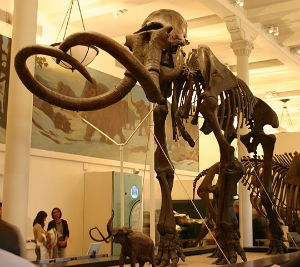 DNA evidence indicates this specimen in the American Museum of Natural History, formerly treated as a species (Mammuthus jeffersonii), is a hybrid of Mammuthus columbi and M. primigenius. Image: Ryan Somma, Wikimedia.
DNA evidence indicates this specimen in the American Museum of Natural History, formerly treated as a species (Mammuthus jeffersonii), is a hybrid of Mammuthus columbi and M. primigenius. Image: Ryan Somma, Wikimedia.
Mammuthus columbi [Columbian Mammoth]
× (♂) Mammuthus primigenius [Woolly Mammoth] ENHR. This is probably the best documented of the various extinct elephant hybrids. In the sub-glacial regions of North America, a hybrid zone between these elephants extended from southern British Columbia to Virginia.Mammuthus primigenius occurred to the north of Mammuthus columbi, which was primarily a savanna and grassland inhabitant, as is the modern African elephant. The remains of numerous intermediate mammoths (probable hybrids) have been found in regions corresponding to the former contact zone (Agenbroad 2005). In addition, some animals have been identified that morphologically were woolly mammoths, but had M. columbi DNA (which indicates that the sire in this cross was M. primigenius). Both morphological and DNA evidence indicates that the fossil specimen in the American Museum of Natural History on which the taxon Mammuthus jeffersonii (Jefferson Mammoth) was based, is probably this hybrid. It combines traits of both these probable parents and it is intermediate in size, about as big as a bull African elephant. Columbian mammoths were much larger than woolly mammoths. Agenbroad 2005; Enk et al. 2011, 2016; Fisher 2001.
Mammuthus jeffersonii [Jefferson Mammoth] See: Mammuthus columbi × Mammuthus primigenius.
Note: According to Wikipedia, the Southern Mammoth (Mammuthus meridionalis) lived in Europe and central Asia 2.5–1.5 million years ago.
Mammuthus meridionalis [Southern Mammoth]
× Mammuthus trogontherii [Steppe Mammoth] ENHR. CON: Formerly, in Europe and Asia. Fossils indicate extensive hybridization occurred in regions of contact. Lister and Sher 2001, 2015.
Mammuthus primigenius [Woolly Mammoth]
See: Elephas maximus, Mammuthus columbi.
× Mammuthus trogontherii [Steppe Mammoth] ENHR. CON: Formerly, in the sub-glacial regions of Eurasia. Analysis of fossils shows that many intermediates (probable hybrids) between these two extinct forms existed in Siberia. Lister and Sher 2001, 2015.
Mammuthus trogontherii [Steppe Mammoth] See: Mammuthus meridionalis; M. primigenius.
By the same author: Handbook of Avian Hybrids of the World, Oxford University Press (2006).